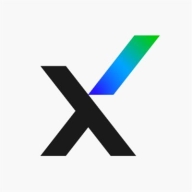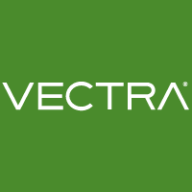

Trellix Endpoint Security Platform and Vectra AI compete in the cybersecurity space, focusing on endpoint and network protection, respectively. While Trellix excels in centralized management and integration capabilities, Vectra AI leads in advanced threat detection using AI and machine learning to reduce alert fatigue.
Features: Trellix Endpoint Security Platform offers centralized management with scalability, an antivirus suite, DLP, device control, and drive encryption. It is notable for its ease of integration and use. Vectra AI specializes in advanced threat detection utilizing AI and machine learning to monitor network behaviors and detect anomalies, reducing alerts for more efficient security operations.
Room for Improvement: Trellix could reduce memory consumption further and improve integration with third-party products, as well as expand support for Mac and Linux systems. Users note the platform’s heaviness and call for performance optimizations. Vectra AI should enhance false-positive reductions and improve integration with SIEM systems while offering more comprehensive documentation and user interface enhancements.
Ease of Deployment and Customer Service: Trellix provides deployment flexibility across on-premises, public cloud, and hybrid environments, although support receives mixed reviews. Vectra AI supports on-premises and hybrid deployments, often receiving high praise for effective customer service and support. Users seek improvements in both deployment experiences and customer service reliability.
Pricing and ROI: Trellix is considered expensive but offers comprehensive features, validating its cost for larger organizations with positive ROI through reduced recovery costs. Vectra AI, also high-priced, provides strong value via its advanced threat detection capabilities, justifying the investment given the substantial security benefits it offers.
We have observed tremendous return on investment after implementing Trellix Endpoint Security as it is a more cost-effective solution compared to other products.
There are two parts: one is the encryption which is standard and no AI is needed, but the data protection part could benefit from AI to detect new types of data and protect it.
Clients appreciate the solution’s customization capabilities and ongoing product improvements.
I would rate their customer service nine out of ten.
The response time is a notable issue.
I rate the support from Trellix a perfect ten.
When I create tickets, the response is fast, and issues are solved promptly.
The support is quite reliable depending on the service engineer assigned.
I would rate the scalability of the solution as a six out of ten, indicating some challenges due to downtime requirements.
Trellix Endpoint Security is scalable.
I would rate the stability of Trellix Endpoint Security as near perfect, close to ten out of ten.
I would rate its stability as nine out of ten.
I think it's stable enough; earlier it had glitches, but now it's stable enough.
It doesn't support Microsoft Windows Hello authentication.
It would also help if detection specifics were identified more quickly and the problem-solving process accelerated, especially to meet larger clients' expectations.
The product does not seem to be cloud-native.
ExtraHop's ability to decrypt encrypted data is a feature that Vectra AI lacks.
You need to have a Linux server, and from the Linux server, you must perform AI tasks, and there is a lot to be handled in the back end.
Neither Vectra nor Darktrace have a function like a status health check on my log sources and traffic sources.
Trellix Endpoint Security is cost-effective and provides excellent value for money.
The license costs are very reasonable, around 1,000 to 1,200 rupees per year.
Vectra is cheaper in terms of pricing and features compared to Darktrace.
It is very acceptable when you compare it with Darktrace, for example.
Trellix Endpoint Security is a proven, robust, and cost-effective solution that protects the organization from different types of ransomware and attacks.
The detection capability of Trellix Endpoint Security is higher than traditional antivirus solutions.
Including options like Application Control (formerly Solidcore), integrated monitoring, change control, DLP, and advanced threat protection, the solution offers comprehensive security.
The main feature of Vectra AI that I find valuable is its focus on the user interface and its approximately two hundred algorithms based on artificial intelligence and machine learning.
There are extensive out-of-box detection capabilities.
| Product | Market Share (%) |
|---|---|
| Trellix Endpoint Security Platform | 3.6% |
| Vectra AI | 3.4% |
| Other | 93.0% |


| Company Size | Count |
|---|---|
| Small Business | 67 |
| Midsize Enterprise | 36 |
| Large Enterprise | 59 |
| Company Size | Count |
|---|---|
| Small Business | 9 |
| Midsize Enterprise | 10 |
| Large Enterprise | 27 |
Trellix Endpoint Security Platform offers essential features like centralized management, threat prevention, and encryption, facilitating seamless scaling and integration with other systems while prioritizing user security.
This comprehensive platform focuses on endpoint protection, antivirus capabilities, and malware defense. It enhances cybersecurity with data loss prevention, advanced threat detection, and AI-driven features for reliable protection without impacting performance. Central management and advanced reporting streamline integration and ease of use. Flexible policy deployment through the management console and its robust security measures, such as DLP and device control, further increase protection. Challenges include high CPU and memory usage affecting performance, a complex interface, and lengthy deployment. Third-party integration and Windows Hello support need improvement. Additional concerns involve improved threat detection and faster technical support responses.
What are the key features of Trellix Endpoint Security Platform?Trellix Endpoint Security Platform is widely implemented in industries such as banking and government for securing mobile and desktop devices. Its capabilities cover network security, device control, and remote access protection, catering to diverse environments by offering robust cybersecurity management against advanced threats.
Vectra AI enhances security operations by pinpointing attack locations, correlating alerts, and providing in-depth visibility across attack lifecycles, ultimately prioritizing threats and improving incident responses.
Vectra AI integrates AI and machine learning to detect anomalies early and supports proactive threat response. Its features like risk scoring, alert correlation, and streamlined SOC efficiency are supplemented by integration with tools like Office 365. Users highlight integration, reporting, and customization challenges, alongside limitations in syslog data and false positive management. They seek enhancements in visualization, UI, TCP replay, endpoint visibility, and tool orchestration, with requests for improved documentation, licensing, and cloud processing innovation.
What are the key features of Vectra AI?In industries like finance, healthcare, and critical infrastructure, Vectra AI is crucial for threat detection and network monitoring. Entities use it for identifying anomalous behaviors and enhancing cybersecurity by responding to network activities and analyzing traffic for potential breaches. It operates on-premises and in hybrid cloud settings, enabling threat detection without endpoint agents and supporting compliance and policy enforcement.
We monitor all Extended Detection and Response (XDR) reviews to prevent fraudulent reviews and keep review quality high. We do not post reviews by company employees or direct competitors. We validate each review for authenticity via cross-reference with LinkedIn, and personal follow-up with the reviewer when necessary.